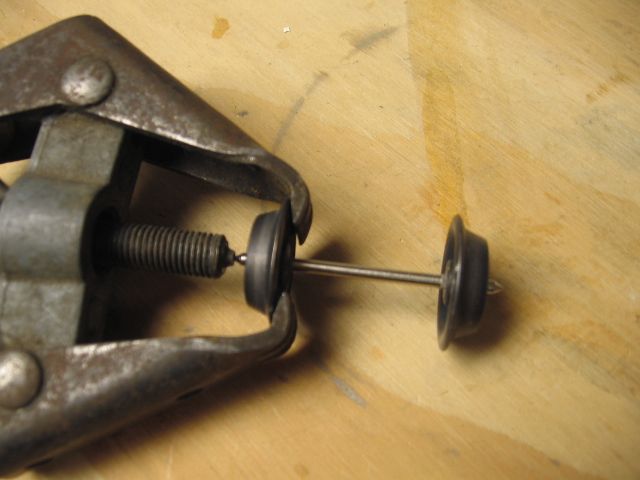I'll gladly take any Weaver 40' or 50' boxcars that nobody wants... !! Especially if they are decorated in prototypical 1950's-'60's-'70's eastern U.S. railroad schemes.
!! Especially if they are decorated in prototypical 1950's-'60's-'70's eastern U.S. railroad schemes.
I love them! Mainly because you can buy them on the cheap (they are readily available on the secondary market) and put a moderately-detailed, scale-sized boxcar on the tracks at a very reasonable cost. They are a really nice complement to the competitors' scale-sized offerings, typically at a much lower cost!
Are they light? Yes. But that can be easily remedied as others have mentioned above. My method is to first add either Weaver or AtlasO die-cast trucks and couplers. Second, I add stick-on wheel weights (as pictured below) to the interior floor over the trucks. I add enough weight to bring them up to--or close to--the NMRA recommended standard for the particular car length. Really easy!!
You can also use the Weaver car weights, but I personally don't like them. My reason? The Weaver plastic floors have molded-in "wooden floor boards" (as shown below) that look pretty good when painted/weathered. (On a side note, I really wish MTH would do something similar on their Premier boxcars. IMO, that would greatly enhance the look of the non-detailed, sheet-metal floors they use in many of their otherwise really nice boxcar models!)
Back to Weaver...the large, flat Weaver weights are mounted on the center of the boxcar floor and cover the nicely-detailed "floor boards", and therefore don't provide the nice "canvas" for guys like me who like to weather the interiors.
And there's absolutely no reason to over-pay for Weaver boxcars (as SIRT mentioned above), especially if they are equipped with plastic 3-rail trucks and couplers! I've had great luck buying them in bulk quantity for $12-$20 at local train shows, and every once in a while on eBay.
I was also able to purchase a large quantity of die-cast trucks and couplers from Weaver right after I heard the news of their closing. Once I run out of them, I will use AtlasO trucks and couplers as they can also work on Weaver cars, and are readily available, too.




 I greatly appreciated the information from Forum members about red, white and blue cars--for my UB30 Spirit of 76 engine. I was lucky I located three Weaver cars: "Sharing the Freedom" all with different road numbers. These cars look fantastic and are closer to scale size. HOWEVER, I am disappointed in the fact that these cars are light as a feather--now weighted to NMRA Standards--but I'm still having de-railing issues with two of them.
I greatly appreciated the information from Forum members about red, white and blue cars--for my UB30 Spirit of 76 engine. I was lucky I located three Weaver cars: "Sharing the Freedom" all with different road numbers. These cars look fantastic and are closer to scale size. HOWEVER, I am disappointed in the fact that these cars are light as a feather--now weighted to NMRA Standards--but I'm still having de-railing issues with two of them. 










